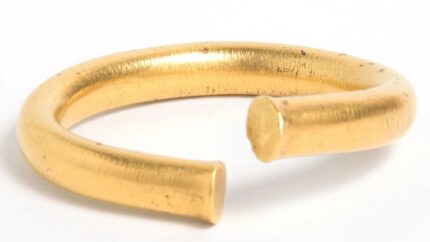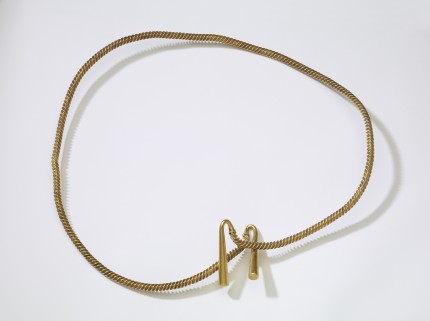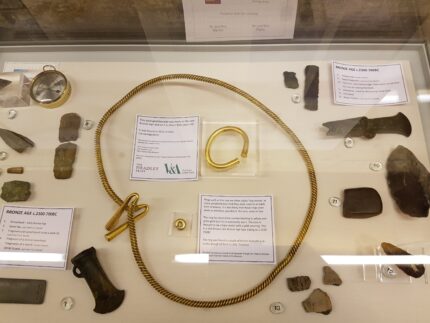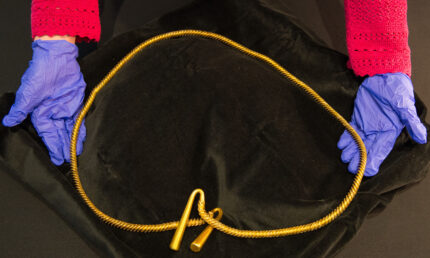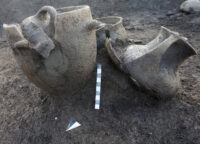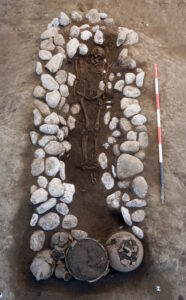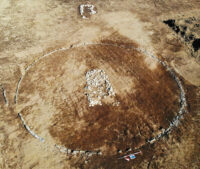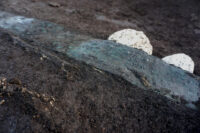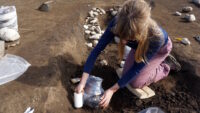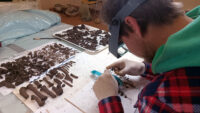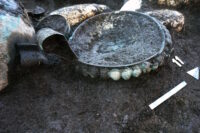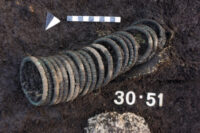 A treasure in coins associated with the notorious conman hermit Anthony Jaczewicz have been discovered in the Jeleniowskie mountain range of south-central Poland. The Świętokrzyska Exploration Group (ŚGE), a group of local metal detectorists searching by consent of the Świętokrzyskie Provincial Monument Conservator, set out seeking traces of the legendary hermit’s treasure in June 2022. They found several deposits of silver and gold coins which are now being recorded and conserved. They’ve kept their discovery quiet for two years to protect the site.
A treasure in coins associated with the notorious conman hermit Anthony Jaczewicz have been discovered in the Jeleniowskie mountain range of south-central Poland. The Świętokrzyska Exploration Group (ŚGE), a group of local metal detectorists searching by consent of the Świętokrzyskie Provincial Monument Conservator, set out seeking traces of the legendary hermit’s treasure in June 2022. They found several deposits of silver and gold coins which are now being recorded and conserved. They’ve kept their discovery quiet for two years to protect the site.
 Antoni Jaczewski was one of many adventurers and grifters who suckered people in the late 17th and early 18th century when Poland was struck by another wave of plague. As happened when the Black Death first devastated Europe in the middle of the 14th century and in subsequent pandemic outbreaks, desperate people turned to religious figures and practices for healing. Jaczewski built a hermitage in the Swiętokrzyskie Mountains in May of 1708. He claimed to have received the power to heal the sick from the Virgin Mary who was living there in the hermitage with him.
Antoni Jaczewski was one of many adventurers and grifters who suckered people in the late 17th and early 18th century when Poland was struck by another wave of plague. As happened when the Black Death first devastated Europe in the middle of the 14th century and in subsequent pandemic outbreaks, desperate people turned to religious figures and practices for healing. Jaczewski built a hermitage in the Swiętokrzyskie Mountains in May of 1708. He claimed to have received the power to heal the sick from the Virgin Mary who was living there in the hermitage with him.
 The fraud was incredibly effective. Donations poured in and soon the hermitage was so flush with cash that Jaczewski needed to hire armed guards. That launched another lucrative sideline for the fake holy man: robbing pilgrims and raiding neighboring estates. The local nobility finally arrested him and he was imprisoned by the Bishop of Krakow, but he soon escaped and went right back to his mountain hermitage flogging phony healing. He was by no means in hiding, and it seems he had at least tacit approval from papal authorities. Eventually he made too much trouble for the wrong people again, and in 1712 he was arrested and put on trial at the Krakow episcopal court. He was convicted and sentenced to life imprisonment in the fortress of Częstochowa.
The fraud was incredibly effective. Donations poured in and soon the hermitage was so flush with cash that Jaczewski needed to hire armed guards. That launched another lucrative sideline for the fake holy man: robbing pilgrims and raiding neighboring estates. The local nobility finally arrested him and he was imprisoned by the Bishop of Krakow, but he soon escaped and went right back to his mountain hermitage flogging phony healing. He was by no means in hiding, and it seems he had at least tacit approval from papal authorities. Eventually he made too much trouble for the wrong people again, and in 1712 he was arrested and put on trial at the Krakow episcopal court. He was convicted and sentenced to life imprisonment in the fortress of Częstochowa.
ŚGE managed to locate a large collection of coins from the first half of the 17th century and the beginning of the 18th century, including orts, sixes, krajcars, kopecks (so-called teardrops). and other. The Hamburg ducat from 1648 looks particularly interesting, with an image of Madonna and Child pierced at the edge of the coin, which suggests that it could have served as a medallion. It seems, therefore, that the coins may be part of the fees collected by the self-proclaimed hermit, donations or votive offerings, or perhaps also goods stolen from the local nobility. The deposit of coins, secured by the conservation services and members of ŚGE, was transferred to the Historical and Archaeological Museum in Ostrowiec Świętokrzyski. “Its conservation and detailed numismatic and historical analysis are planned this year, which we hope will provide more answers about the past of this deposit.” – said Wojciech Siudowski, from WUOZ in Kielce






